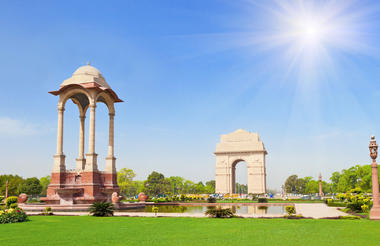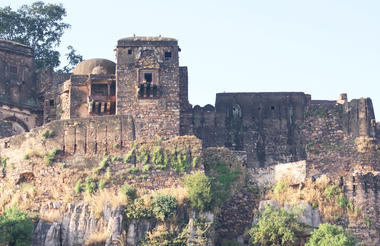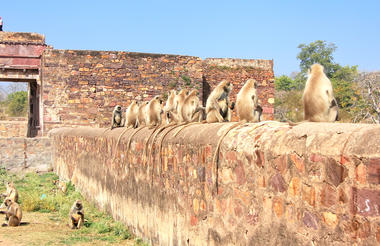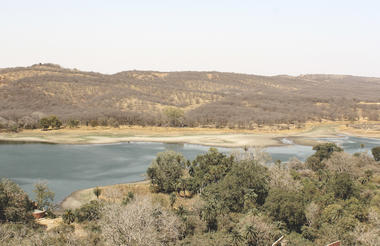India’s largest city, Delhi, has been one of the country’s commercial and economic hubs for centuries and, as a result, is incredibly rich in culture and history. Comprising the ancient walled city of Old Delhi and the more modern entity, New Delhi, the city encompasses a staggering array of stunning architecture, notable monuments, and age-old temples, including three UNESCO World Heritage Sites – the Red Fort complex, Qutab Minar and its attendant monuments, and Humayun's Tomb. Other key attractions include the 17th century Chandni Chowk marketplace – still one of the city’s most tradtional wholesale and popular retail centers today, particularly for jewelry and traditional Indian saris; the iconic Bahà’i Lotus Temple – an award-winning architectural gem; and the Jama Masjid, India’s largest mosque.



Fringed by the rugged Aravali Hills, Jaipur is the capital and largest city in India’s northern state of Rajasthan. This city is famed for being India’s first planned city featuring a multitude of pink terracotta buildings within the walled historic center, earning it the nickname,’ The Pink City. Jaipur falls within the Golden Triangle, a popular tourist circuit, which includes Delhi, Jaipur, and Agra, and serves as a gateway to the neighboring desert cities of Jaisalmer and Jodhpur. This colorful city is a combination of tradition and modernity and offers visitors vibrant bazaars, lavish palaces, and ancient temples. The salmon-hued old city is home to the opulent City Palace, encompassing an impressive assortment of palatial structures, sprawling gardens, courtyards, and buildings. Don’t miss the fairy-tale splendor of the Amber Fort, set against the backdrop of the arid landscape.



Sawai Madhopur, the lively capital city of the greater Sawai Madhopur District, is sited in southeast Rajasthan, on the northern extension of the sprawling Vindhyan Plateau. The city is famous for its flourishing fauna and flora and mouth-watering cuisine. Some of the best ways to experience these local treasures include a meander through enchanting public gardens and a sampling of the delicious local dishes at the numerous restaurants. Both a history and nature enthusiasts dream, Sawai Madhopur opens up a world of enjoyable excursions with some of the most notable attractions being the UNESCO World Heritage Site of Ranthambore Fort; the religiously significant Chamatkar Temple; and the remarkable Ranthambhore National Park, renowned for its abundance of free-roaming wildlife including the majestic Bengal tiger and Indian leopard.



Home of the world-famous Taj Mahal, Agra is one of India’s prime tourist destinations for specifically this reason, though its attractions also extend to an array of other impressive historical sights. These include the red-hued Agra Fort, the sacred Jama Masjid mosque, and Itmad-ud-Daulah’s tomb, with its white marble facade embellished with intricate inlaid designs and semi-precious gems. The Taj, however, is in a league of its own and needless to say is a must-see for any visitor to the city. Commissioned by the Mughal emperor Shah Jahan in the 15th century as a memorial to his beloved wife Mumtaz Mahal, it is an architectural masterpiece of exquisite craftsmanship and perfect proportions.



As previously described






